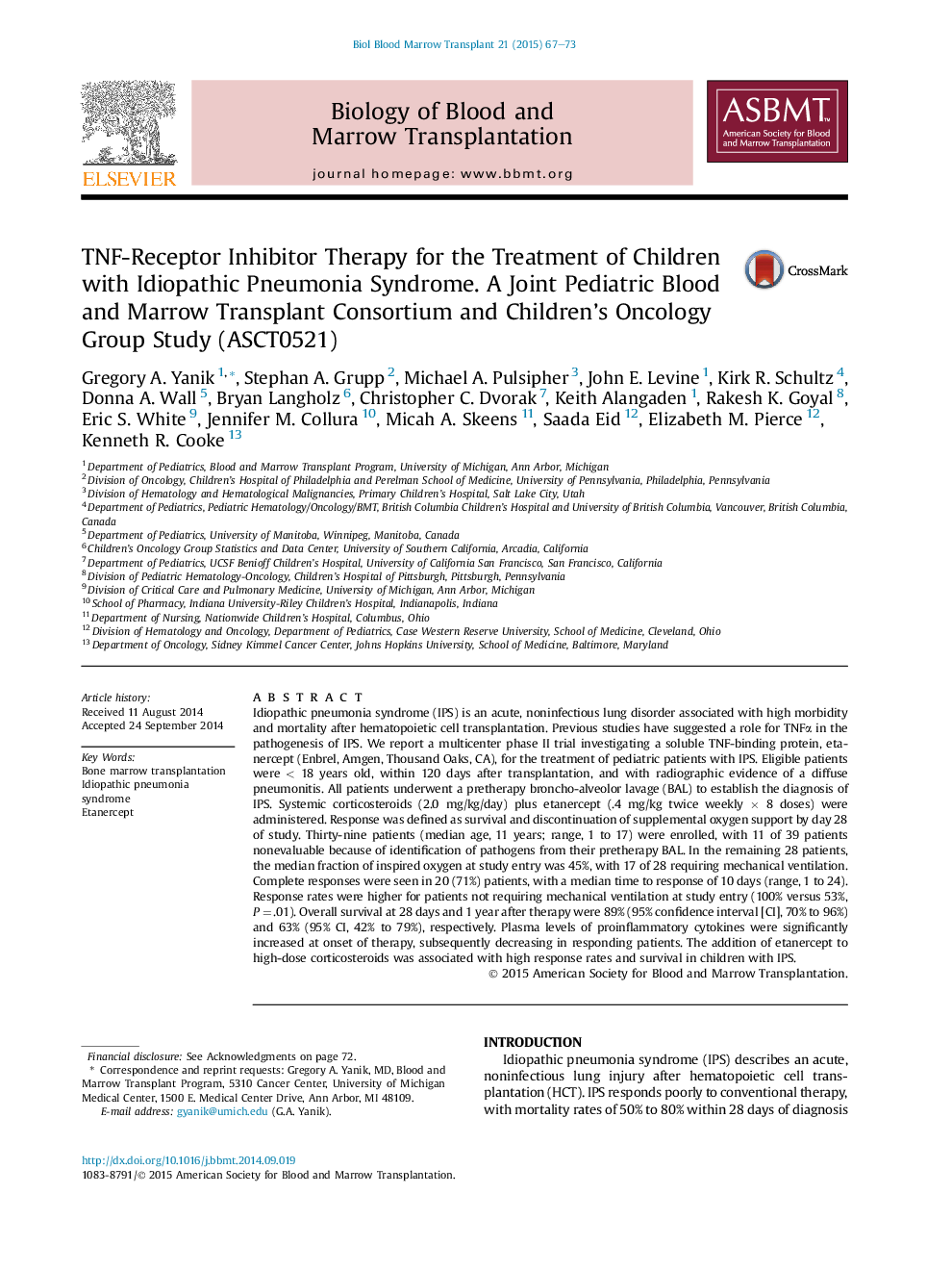| Article ID | Journal | Published Year | Pages | File Type |
|---|---|---|---|---|
| 2101863 | Biology of Blood and Marrow Transplantation | 2015 | 7 Pages |
•Etanercept plus steroids is associated with high response rates in pediatric patients with idiopathic pneumonia syndrome.•Therapy is optimized if initiated before the development of severe lung injury.•Plasma biomarkers are associated with response, supporting a role for TNF inhibition in idiopathic pneumonia syndrome therapy.
Idiopathic pneumonia syndrome (IPS) is an acute, noninfectious lung disorder associated with high morbidity and mortality after hematopoietic cell transplantation. Previous studies have suggested a role for TNFα in the pathogenesis of IPS. We report a multicenter phase II trial investigating a soluble TNF-binding protein, etanercept (Enbrel, Amgen, Thousand Oaks, CA), for the treatment of pediatric patients with IPS. Eligible patients were < 18 years old, within 120 days after transplantation, and with radiographic evidence of a diffuse pneumonitis. All patients underwent a pretherapy broncho-alveolor lavage (BAL) to establish the diagnosis of IPS. Systemic corticosteroids (2.0 mg/kg/day) plus etanercept (.4 mg/kg twice weekly × 8 doses) were administered. Response was defined as survival and discontinuation of supplemental oxygen support by day 28 of study. Thirty-nine patients (median age, 11 years; range, 1 to 17) were enrolled, with 11 of 39 patients nonevaluable because of identification of pathogens from their pretherapy BAL. In the remaining 28 patients, the median fraction of inspired oxygen at study entry was 45%, with 17 of 28 requiring mechanical ventilation. Complete responses were seen in 20 (71%) patients, with a median time to response of 10 days (range, 1 to 24). Response rates were higher for patients not requiring mechanical ventilation at study entry (100% versus 53%, P = .01). Overall survival at 28 days and 1 year after therapy were 89% (95% confidence interval [CI], 70% to 96%) and 63% (95% CI, 42% to 79%), respectively. Plasma levels of proinflammatory cytokines were significantly increased at onset of therapy, subsequently decreasing in responding patients. The addition of etanercept to high-dose corticosteroids was associated with high response rates and survival in children with IPS.
